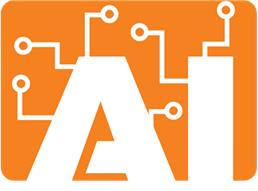Deep learning is receiving a lot of attention recently, and for all the right reasons. This technology is delivering results that were not possible to achieve before.
What is Deep Learning?
In deep learning, a computer program learns to identify, differentiate, and contextualize data unstructured data such as images, text, and sounds. The underlying framework to such models is usually a complex, hierarchical set of artificial neural architectures with multiple layers. An average deep learning network may have approximately 150 layers or more, whereas a traditional neural network has three to four layers.
How Does It Work?
Deep learning techniques such as CNN (Convolutional Neural Networks), stochastic gradient descent, back-propagation, dropout, max-pooling, etc. perform end-to-end learning from the data set without any human supervision. These models perform tasks like classifying data, identifying attributes, etc. on their own to reach the end goal the models are expected to achieve.
A deep learning model’s artificial neural networks are built to replicate the human brain’s neurons; the neuron nodes connect like a web to replicate the human thinking process. While traditional approaches perform linear analysis of data, deep learning models take the non-linear analysis route. Each layer’s output is input for the next layer, which includes raw data correlating to it in its analysis of the input.
Deep Learning vs. Machine Learning
Deep learning technology is a subset of machine learning.
Machine learning (ML) as a discipline, deals in the development of self-learning algorithms capable of performing their intended task without being explicitly programmed to do so. However, a majority of traditional ML models can learn only from well-labeled and structured data.
On the other hand, deep learning enables a model to learn from unstructured data. Deep learning models are significantly more complex, have a higher number of layers, require higher computing power, and are equipped to work with a more diverse set of attributes.
Deep Learning Use Cases in E-commerce
A considerable number of organizations across industries are adopting deep learning to streamline their analytics and decision-making processes. Following are deep learning use cases that make up the largest market share for deep learning solutions.
Product Categorization
Ecommerce websites host numerous sellers and hence have millions of different products that need to be categorized. With help from an intelligent deep-learning algorithm, ecommerce websites can efficiently and easily categorize the products.
Unlike traditional algorithms, deep learning models have the required capacity to process the humongous data sets of categories and products, and categorize products in a universal taxonomy. Such classification makes it easier for customers to find what they’re looking for.
Visual Product Search
Another important application of deep learning systems in the e-commerce space, visual product search is the ability to look for a product using similar product images. The deep learning algorithm analyzes colors, shape, pattern, etc. of the input image to find matching images in the database.
For example, if your best friend has a cute plush toy that you really like, simply click a picture of it and look it up at an ecommerce site that supports visual product search. You’ll see a list of all products that match the picture you uploaded.
Virtual Fitting Rooms and Mirrors
A virtual equivalent of physical changing rooms, a virtual fitting room allows a user to try on styles and products. Deep learning models are used to create a virtual avatar of the user using the images, measurements, and specifications that the user provides.
Facial Recognition
E-commerce websites can employ deep learning models to have face recognition capabilities. For example, MasterCard has integrated facial recognition in its identity check procedures, whereas AliBaba is working on its ‘Smile to Pay’ interface using facial recognition.
Deep learning models generate face encodings which are unique to each face. To recognize a face, the algorithm compares the face encodings generated to those in its knowledge base.
Takeaway
Deep learning models have already proven their worth across industries and applications. If you are looking for a deep learning consultancy, you can get in touch with us here.
We’re here to make AI work for you.
Talk to our team today and start your AI journey. Whether you have questions about our services, need support, or want to discuss a potential project, our team is ready to help.
Social network
sales@netsmartz.com





